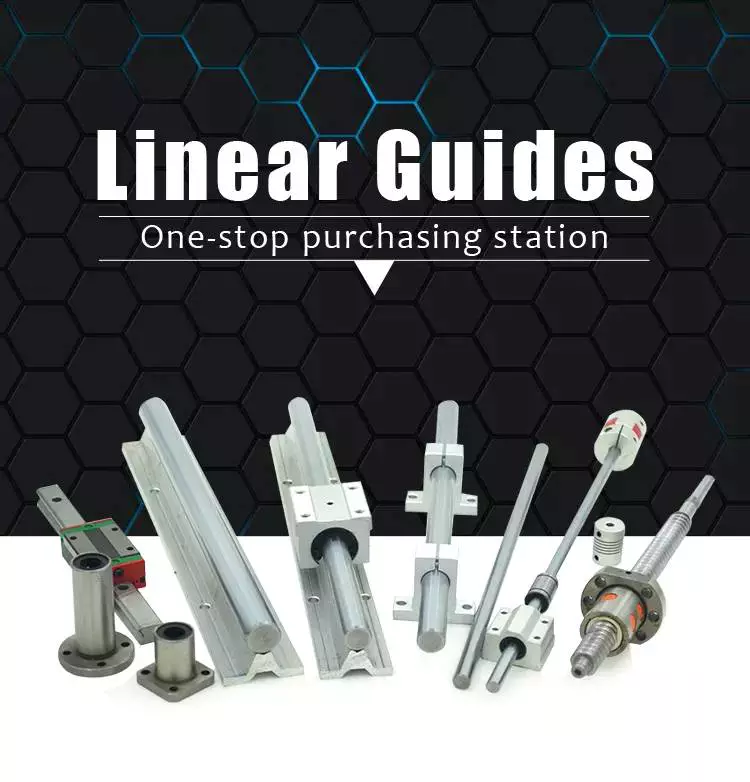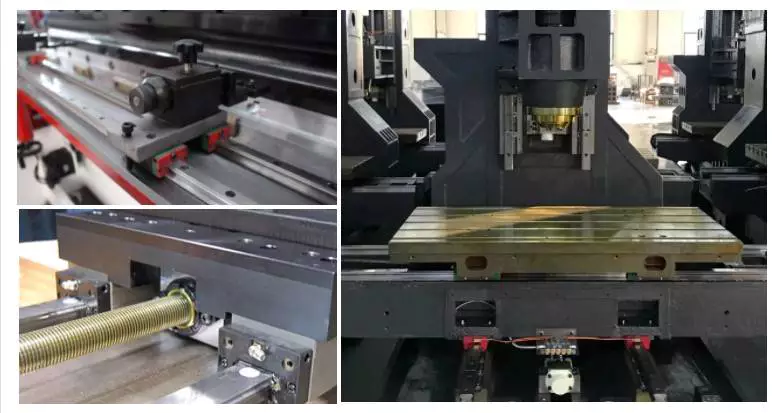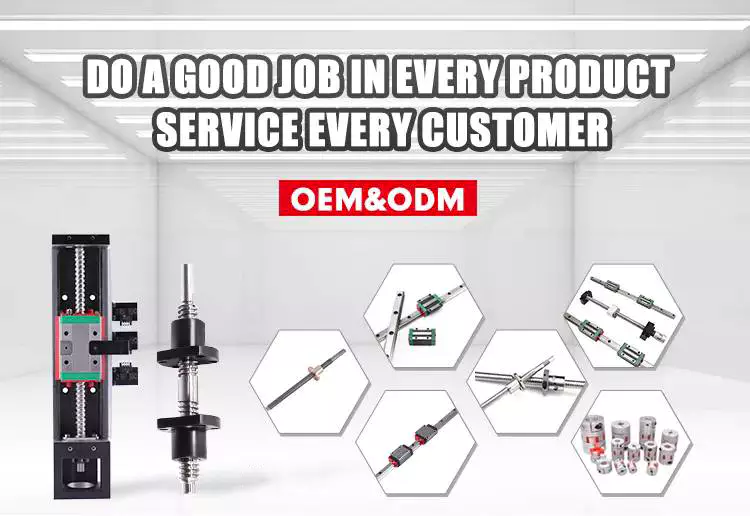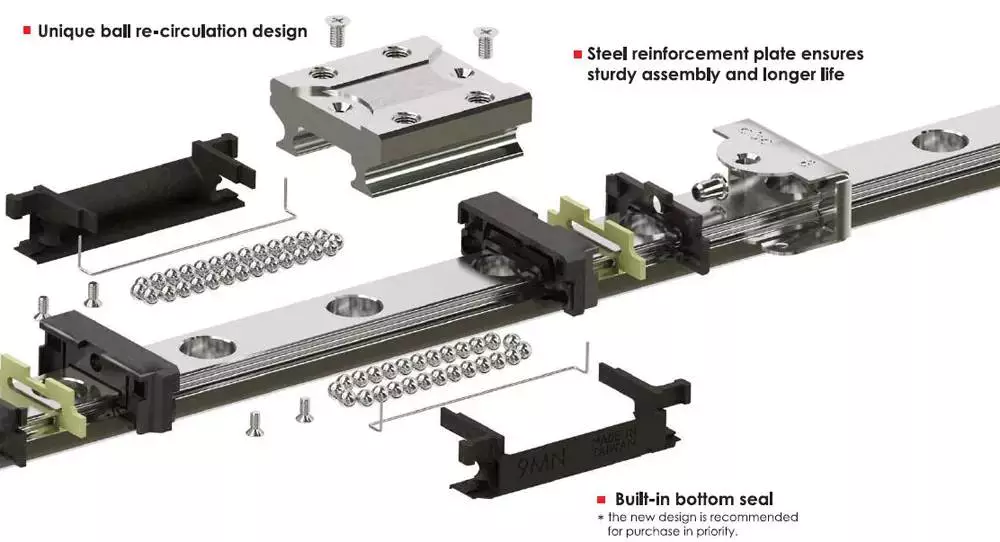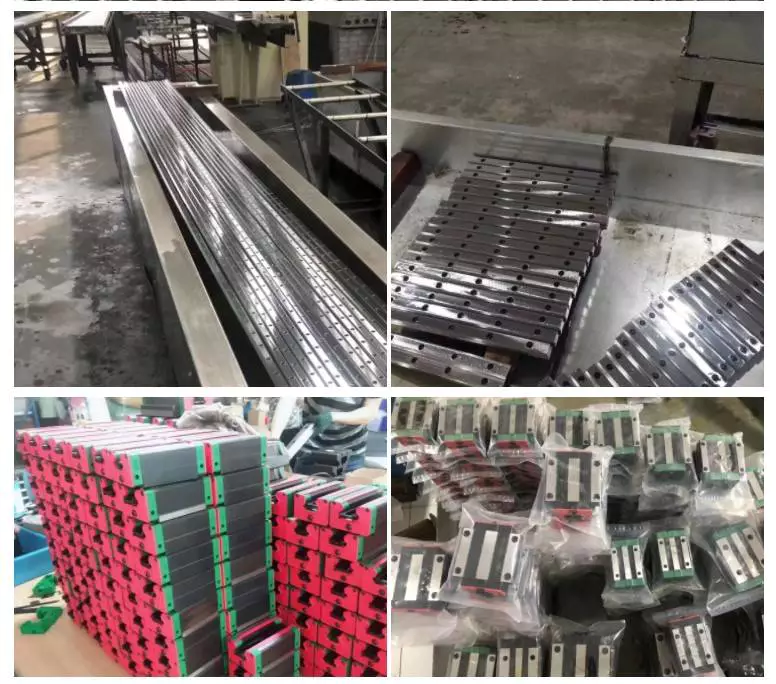Condition: New
Warranty: 3 months
Applicable Industries: Building Material Shops, Manufacturing Plant, Machinery Repair Shops, Construction works , Energy & Mining, Food & Beverage Shops, Advertising Company, peek gear manufacturer customized CNC machine gear module 0.3 gear BOAT
Weight (KG): 10
Video outgoing-inspection: Provided
Machinery Test Report: Provided
Marketing Type: New Product 2571
Warranty of core components: 1 Year
Core Components: Bearing, Gearbox, Motor
Model Number: 40
Material: stainless steel
Name: linear actuator for solar tracker
Input Voltage: 220V
Load: 10000N
Speed: 500mm/s
Color: black/silver
Noise Level: <60dB
Limit switch type: Built-in
Operation temper: -26 – 65°C
Protection class: IP66
Packaging Details: Bulk Cargo of Wooden Containers and Containersbuyers generally speaking bear the change of packing
Port: HangZhou
high speed high precision linear guide rail linear motor linear motion
1. CE Certificate.
2. MOQ:1
3. Germany technology.
4. We have a wide range of linear actuator for CZPT customer.
5. Short deliver time for sample order, just 1-5 working days.
6. Good after-sale service.
7. Low noise.
8. Paypal is accepted.
Electric actuators in construction machineryDurability and reliability are the main concerns when operating heavy-duty construction machinery. Materials and applications need to be able to work relentlessly through extremely harsh working environments, and staff must be kept safe at all times. Using well-proven electric actuator solutions, you will be able to offer:
Company Information
Company Certificate
Related Products
OUR ADVANTAGES
Packaging & Shipping
FAQ
Q1: Isit ok for you to make customer’ 3HP2.2KW Industrial heavy-duty type belt driven air compressor_W0.36150LV s brand? A1: Yes, we can make customized brand.
Q2: do you have it in stock? A2: some products are available in stock and can be delivered
within 7 days.Q3: how long does it take for mass production? A3: according to the quantity, about 30-60 days.Q4: which payment method is acceptable? A4: T / T, L / C. western union.Q5: how to ensure the quality? A5: We have a strong team, special design, exquisite production
technology and exquisite materials and exquisite workmanship.Q6: what’s your MOQ? A6: the minimum order quantity is 500 PCs. Of course, 2571 New Product Fire Brick Concrete Mixers For Refractory
we can accept small trial orders for some products.

Applications and Maintenance of a Linear Rail
Whether you are looking to install a linear rail or you are looking for ways to maintain your existing one, there are some important factors to consider. In this article, you will learn about the applications for linear rails, the maintenance of a linear rail, and some of the common issues associated with linear guides.
Common issues with linear guides
Choosing the right linear guide can yield significant advantages in performance, cost and durability. However, it isn’t enough to just pick the right guide. To ensure maximum performance, you need to understand the components and technologies that go into the design. This article will highlight some of the most common problems associated with linear guides, and how to avoid them.
The most important thing to remember about a linear guide is that it is a component of a system. It should not be operated alone. If a linear guide fails, you’ll need to take steps to get it repaired.
A good way to gauge how well a guide will perform is to look at the load moments it carries while on a wall. This will tell you how much the guide can support over a full run of travel.
One of the most important things to consider is the type of mounting you use. It should match the precision of the guide unit. The mounting surface should be flat, and there should be no gaps or wiggles between the guide unit and the mounting surface.
The right kind of mounting will not only make installation easier, but will also ensure that your guide unit operates at its best. In addition, it can help prevent contamination from getting into the guide unit.
Another thing to consider is the quality of the lubricant. Linear guides are prone to corrosion, so it’s important to lubricate them regularly. You can do this by adding a high-quality lubricant that’s resistant to corrosive substances.
Using a linear guide with a good seal can help avoid corrosion. A good seal should have sealing lip that fits tightly around the ball guide profile. In addition, you should consider a thicker lubricant, such as calcium soap, as opposed to standard greases in wet environments.
Another thing to consider is how you can best align the guide unit. For example, you can use a high-speed end cap to reduce misalignment. This will reduce binding, as well as prevent a buildup of dirt and other debris between the guide unit and the mounting surface.
Common applications for linear rails
Across industrial applications, there are many uses for linear rails. Linear rails provide an extremely effective way of moving products and items through production processes. They offer excellent load capacity, low friction and high stiffness.
Linear rails can be manufactured in short or long lengths. These systems are ideal for moving loads from a few grams to thousands of kilograms. Depending on the specific application, the load capacity of the rail may vary.
Linear rails are commonly used in machine-tool applications and semiconductor manufacturing. Linear rails are also used for moving heavy equipment through factory floors. Linear rails are also used in advanced medical applications.
Linear rails can be used on a variety of surfaces. Depending on the type of application, the orientation of the rail may vary. This depends on the type of load and the amount of force being applied. It may also be influenced by the amount of dirt and dust.
Linear rails are designed to support loads from a few grams to thousands of kilograms. They are used in a variety of industries, including semiconductor manufacturing, packaging and medical devices. In many applications, linear rails are also used as the guide for actuators. Linear rails are a useful alternative to complex alignment operations.
Linear rails are often used in overhead transport systems. Linear rails are usually made of high strength steel and are profiled for maximum rigidity. They also have nickel-plating for corrosive environments.
Linear rails are often used in factory floors for heavy equipment, like moving robot arms. These systems can be used to move items around the factory floor or on high platforms above walkways. Linear rails are also used in the food and beverage industry. They are commonly used in weighing machines and CNC machines.
Linear rails are ideal for moving products with minimal friction. They also are used in semiconductor manufacturing, where the need for precision is crucial. Linear rails provide high load capacity and can accommodate travel speeds of up to five meters per second. Linear rails are also used in many transportation lines, including ice machines.
Cost of linear rails
Choosing the right linear rail can have a significant impact on the cost and performance of your system. Linear rails are used in all kinds of industries. They are highly effective when it comes to moving goods and equipment through the manufacturing process. They can be used vertically or horizontally. They are anchored to aluminum extrusion profiles for increased stiffness and accuracy.
The cost of linear rails can be justified by the advantages they offer. They provide high levels of rigidity and load capacity, making them a good option for moving products with minimal friction. Linear rails are also less likely to bend or vibrate. They also have a higher degree of precision and accuracy.
The price of linear rails is higher than those of linear rods. This is due to the fact that linear rails require more screws per unit length. They also require more support. If the rails are not supported, they will bend or rattle. The rails must be fully supported to achieve optimal precision.
Linear rails offer the most rigidity against gravity. They can support loads ranging from a few grams to several tons. They can also withstand moment and lift-off loads.
Rails can be installed using hex slot screws. They require more screws per unit length than rods. They also require accurate mounting surfaces. They can be installed by hand or with tools.
Linear rails are less likely to bend than rods, making them a better option for low precision applications. They are also cheaper.
However, they are not suitable for consumer applications. Rails are not as durable as rods and they are susceptible to bending and vibration. They are also subject to shipping oil and corrosion during transport and storage.
Linear rails cost around 2.5 to 4 times as much as linear rods. This is because they are more expensive to manufacture. They also require a more complex assembly process. They require hex slot screws along the length of the rail. It can be difficult to install.
The lifespan of linear rails is a frequently asked question among design engineers. It’s important to consider the factors that will reduce the lifespan.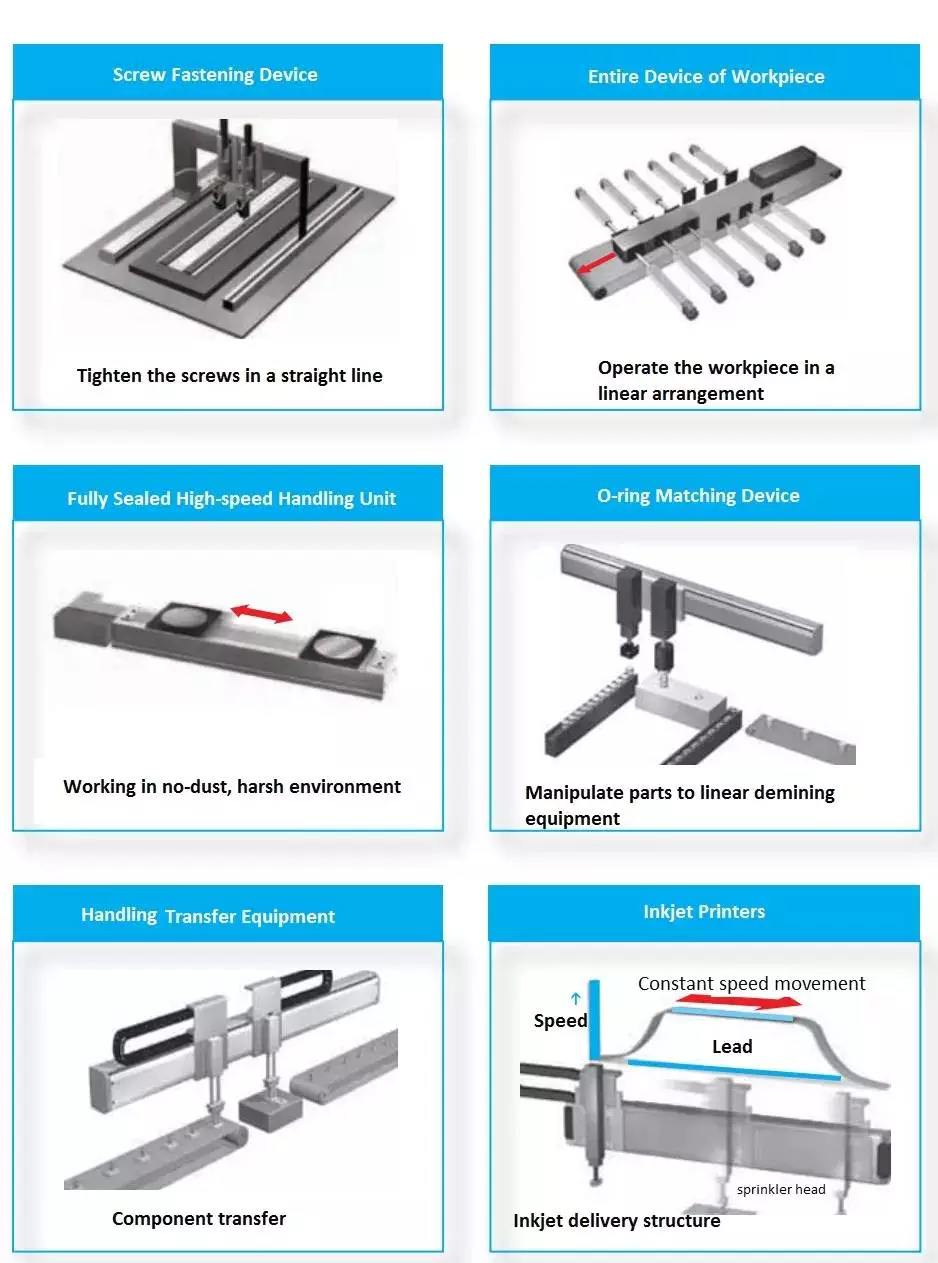
Maintenance of linear rails
Whether you’re working with a linear rail system in an industrial environment or a consumer application, proper maintenance is critical. A well-maintained linear guide rail can withstand loads from a few grams to thousands of kilograms, providing a high degree of rigidity and load capacity.
The most important aspect of maintenance for a linear guide rail is lubrication. Proper lubrication reduces friction and wear, resulting in longer life for your guide rail. The amount of lubrication required depends on the environment in which it is being used and the frequency of use. Generally, a general purpose lubricant is adequate for low speed low load applications. However, when long lubrication cycles are required, a specialised bearing lubricant is necessary.
The components of a linear guide rail are comprised of rail, carriage, linear guide block and load supporting rollers. The rails and guide blocks are made of hardened steel or anodized aluminum. The carriage has two “wings” that align with the rail channel. The rollers are made of softer materials such as stainless steel. A lint-free paper towel can be used to clean the groove in the rail.
If a linear guide rail is used incorrectly, it can corrode. In order to maintain the integrity of the rail, it is important to clean it thoroughly. The lubrication mechanism is often accessed via a syringe, so cleaning the rail is relatively easy. Clean the rail with a shop towel, and then apply grease to the moving parts. This will smooth the motion of the ball screw guides and prolong the life of the linear slides.
If the linear guide is used incorrectly, it can cause excessive misalignment, indentations, and corrosion. It is recommended that the rail be cleaned and lubricated as needed.
The type of linear rail you choose will depend on the type of load it can handle. Aside from the load capacity, it is also important to consider the cost of maintenance. Typically, a linear rail system is more expensive than other systems, so you’ll want to make sure you get the right rail for the job.

editor by Cx 2023-07-13
